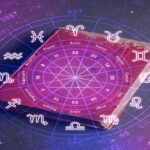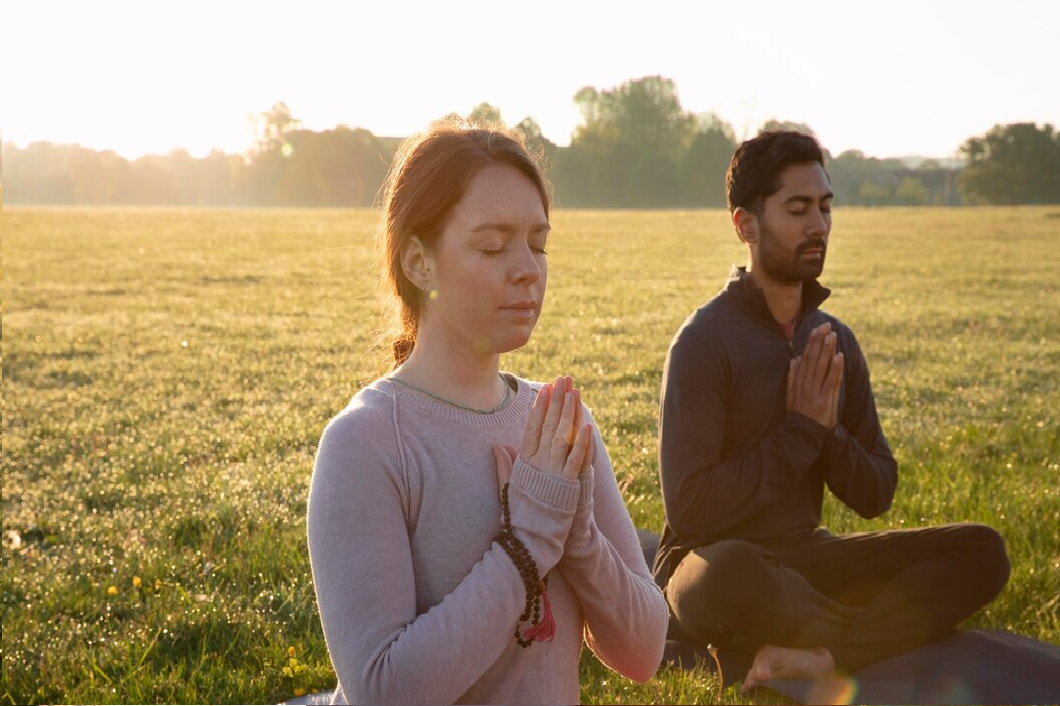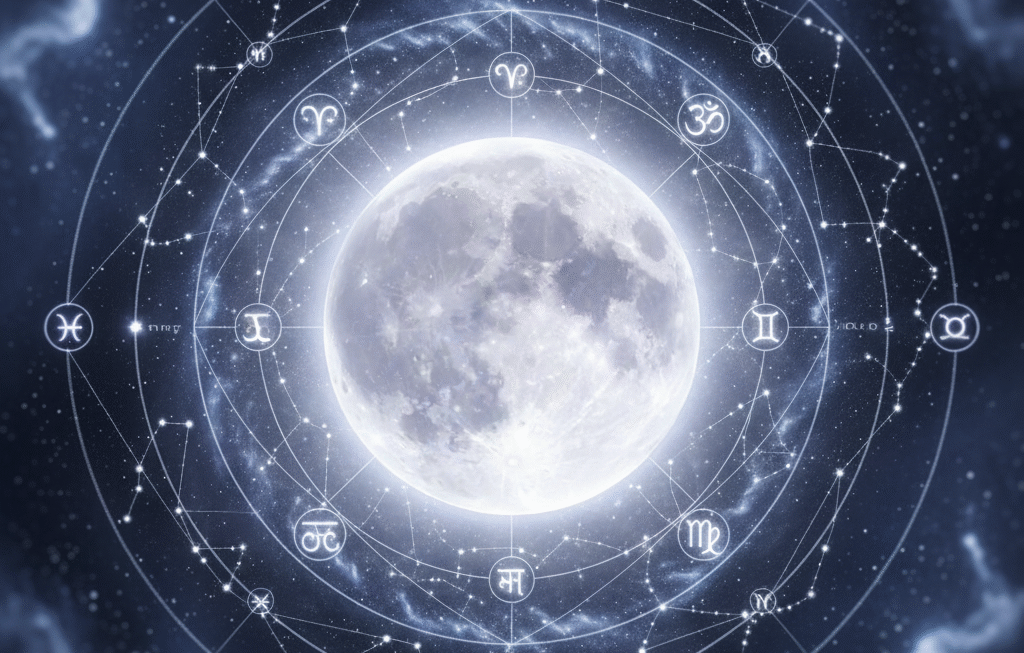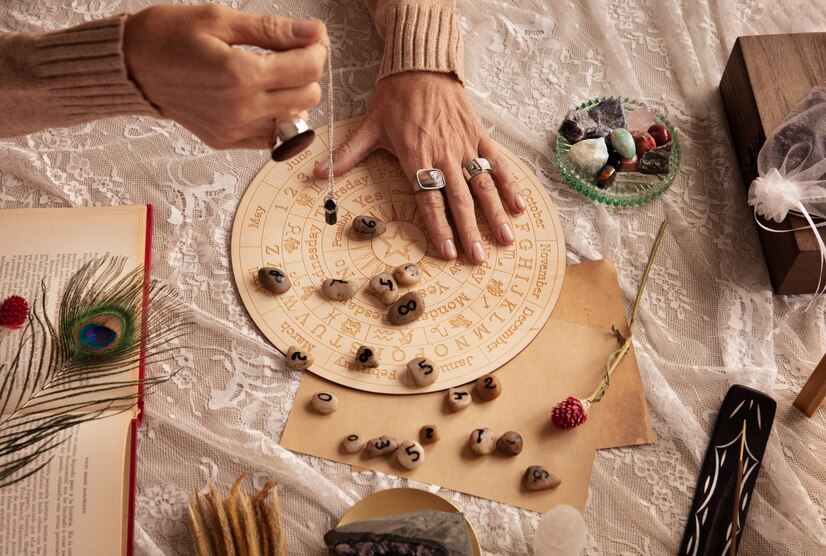Embark on a fascinating journey into the heart of Jyotish interpretive power: the Yogas, or special Planetary Combinations in Vedic Astrology. Beyond individual planet placements, Yogas arise from specific relationships – conjunctions, aspects, house placements, lordships – between Grahas (planets). This guide illuminates Vedic Astrology Yogas Explained, revealing how these combinations act like astrological alchemy, significantly modifying planetary strengths and promising specific results, from immense fortune (Raja Yoga, Dhana Yoga) to challenging life lessons. Understanding Yogas is key to unlocking deeper layers of the Kundali’s message.
First Stop: The Classical Foundations of Yogas
(The Traditional Jyotishi’s View)
Our journey begins in the foundational texts of Jyotish, where sages like Parashara meticulously documented thousands of Yogas, each with specific formation rules and predicted outcomes.
- Historical Context: Yogas are fundamental to classical Jyotish prediction. They represent specific karmic potentials activated when planets align in particular ways. The presence or absence of key Yogas heavily influences the overall interpretation of a chart’s strength and promise.
- Classical Techniques & Categories: Yogas are incredibly diverse, but major categories include:
- Pancha Mahapurusha Yogas: (Five Great Person Yogas) Formed by Mars, Mercury, Jupiter, Venus, or Saturn being strong (exalted/own sign) in a Kendra (angular house). They bestow qualities and success related to the specific planet (e.g., Hamsa Yoga for Jupiter = wisdom, teaching).
- Raja Yogas: (Royal Combinations) Indicate power, status, success, and influence. Typically formed by associations (conjunction, mutual aspect, exchange) between lords of Kendras (1, 4, 7, 10) and Trikonas (1, 5, 9).
- Dhana Yogas: (Wealth Combinations) Indicate potential for wealth and prosperity. Often involve lords of wealth houses (2nd, 11th) associating with Trikona lords or other benefic houses/planets.
- Arishta Yogas: Indicate misfortune, health issues, or suffering. Often involve weak/afflicted Lagna/Moon, or malefic placements in Dusthana houses (6, 8, 12) or Maraka houses (2, 7).
- Nabhasa Yogas: (Sky Yogas) Based on overall patterns of planetary distribution in the chart (e.g., all planets in Kendras, or specific shapes). They give lifelong background themes.
- Traditional Interpretations: The presence of strong benefic Yogas significantly elevates a chart’s potential, promising success even if some individual planets are weak. Conversely, strong Arishta Yogas require caution and remedial measures (Upayas). Interpretation involves assessing the strength of the planets forming the Yoga and the houses involved.
- Expert Insight (Traditional Source): “Just as ingredients combine to create a dish with a unique flavor, so do Grahas combine through Yoga to produce specific life results, modifying their individual natures.” – Principle reflecting classical Jyotish understanding.
- Hidden Wisdom: Yoga Bhanga: (Cancellation of Yoga) Just as Yogas form, specific planetary placements or aspects can sometimes cancel or significantly weaken the promised results of a Yoga. Analyzing these cancellations is crucial for accurate prediction.
Crossing the Bridge: Where Combinations Meet Context
As we journey forward, the interpretation of Yogas moves beyond simply listing their presence. Contemporary Jyotish seeks to understand the context and manifestation of these Yogas in modern life, considering the psychological implications alongside the traditional predictive meanings. A Raja Yoga might manifest differently for a politician versus an artist.
Second Stop: Contemporary Interpretation Landscape
(The Modern Jyotishi’s Approach)
Here, Yogas are explored as powerful indicators of inherent talents, significant life themes, potential challenges, and areas of exceptional promise or difficulty.
- Contemporary Methods: Modern Jyotishis analyze the strength and nature of the planets forming the Yoga, the houses they rule and occupy, and the active Dasha period to understand how and when a Yoga’s results might manifest. The psychological impact is considered – e.g., how does a powerful Raja Yoga influence ambition and self-perception? How does an Arishta Yoga manifest as a recurring challenge pattern?
- Psychological Insights (Vedic Lens): Yogas can represent significant psychological complexes or potentials. For example, Gajakesari Yoga (Jupiter Kendra to Moon) often indicates innate optimism, wisdom, and strong moral compass. Kemadruma Yoga (Moon isolated) might indicate deep-seated feelings of emotional isolation requiring conscious attention. Understanding the psychological dimension helps clients work with their Yogas.
- Evolving Interpretations: The manifestation of traditional Yogas is interpreted in contemporary contexts. Dhana Yogas are analyzed for wealth generation through modern means (tech, finance). Raja Yogas are seen in leadership roles across various fields. Arishta Yogas are understood not just as misfortune but as karmic lessons prompting growth or healing.
- Technique Deep Dive: Assessing Yoga Strength: Evaluating the dignity (exaltation, own sign, etc.), house placement (Kendra, Trikona, Dusthana), combustion status, and aspects received by the planets forming the Yoga is critical to judge its actual power and whether it will deliver its full potential.
- Expert Insight (Modern Jyotishi): “Yogas are the ‘special talents’ or ‘karmic hotspots’ in your chart. They show where planetary energies combine to create something unique and powerful – for better or worse. Understanding your key Yogas reveals your chart’s major storylines.” – Contemporary Jyotish Practitioner.
- Alternative Approaches: Exploring Yogas within specific Varga charts (e.g., Raja Yogas in the D10 Dasamsa for career prominence) adds further refinement.
Third Stop: The Student’s Learning Curve
(The Student’s Journey)
Learning Yogas involves moving beyond individual planet analysis to recognizing specific Planetary Combinations in Vedic Astrology. Memorizing the rules for key Yogas and understanding their effects is a major step in interpretive skill.
- Learning Process: Students typically start by learning the most common and powerful Yogas: Pancha Mahapurusha, major Raja and Dhana Yogas, Gajakesari, Kemadruma, and key Arishta Yogas. Memorizing the formation rules (which planets, which houses, what kind of association) is essential. Synthesizing the Yoga’s promise with the overall chart condition comes with practice.
- Common Questions: “My chart has a Raja Yoga, why am I not famous/powerful?” Answer: The presence of a Yoga indicates potential. Its full manifestation depends on the strength of the planets involved, the absence of cancellations (Yoga Bhanga), and importantly, the activation of the Dasha periods of the planets forming the Yoga. Potential needs timing and support to fully blossom. “Are there Yogas for negative outcomes too?” Answer: Yes, Arishta Yogas specifically indicate potential for suffering, health issues, or misfortune, highlighting areas needing caution or remedial action.
- Breakthrough Moments: Recognizing a major Yoga in one’s own chart and seeing how its themes have played out during specific Dasha periods is a powerful validation. Correctly identifying multiple planets contributing to a single complex Yoga is another interpretive leap. Understanding Yogas deepens chart reading immensely.
- Expert Insight (Jyotish Student): “Learning Yogas felt like discovering secret formulas in the chart! Seeing how two or three planets together could promise something totally different than they would individually was mind-blowing. It added a whole new dimension.”
- Misconceptions vs. Reality: Misconception: Having one strong Raja Yoga guarantees lifelong success. Reality: Yogas indicate potential and operate most strongly during specific Dasha periods. Other chart factors and life choices still matter. Misconception: Only famous people have Raja Yogas. Reality: Many people have Raja Yogas; their strength and manifestation vary widely depending on the factors mentioned above. They indicate potential for influence and success within one’s own sphere.
Fourth Stop: The Realm of Practical Application
(The Practical Application Expert’s Guidance)
Practical Jyotish heavily utilizes Yoga analysis to assess the overall strength and potential of a chart, identify specific talents or challenges, guide career and financial decisions, and understand relationship potentials.
- Real-World Usage: Identifying key Yogas helps pinpoint areas of exceptional promise (e.g., strong Dhana Yogas for financial potential, Saraswati Yoga for learning/arts) or significant vulnerability (Arishta Yogas). This informs guidance and potential remedies. Dasha periods of Yoga-forming planets are closely monitored for activation.
- Client Experiences: Clients often find explanations based on Yogas very illuminating, as they describe overarching life themes or significant potentials/challenges they intuitively recognize. Understanding Yogas can provide hope, validation, or necessary caution.
- Practical Tips:
- Look for associations between Kendra lords (1, 4, 7, 10) and Trikona lords (1, 5, 9) – these form powerful Raja Yogas.
- Check for connections between lords of wealth houses (2, 11) and benefic houses/planets for Dhana Yogas.
- Assess planets in Kendras for potential Pancha Mahapurusha Yogas (if in own sign/exaltation).
- Don’t just count Yogas; assess the strength of the planets involved.
- Remember Yogas manifest most strongly during the Dashas of the participating planets.
- Technique Deep Dive: Yogas in Varga Charts: Analyzing Yogas present in key divisional charts (especially D9 Navamsa and D10 Dasamsa) provides confirmation and refinement of the Yoga’s potential in those specific life areas (dharma/marriage, career).
- Expert Insight (Jyotish Consultant): “Yogas are the power points in a Kundali. Identifying and assessing them allows me to quickly gauge the major potentials and significant karmic themes for the client, providing a backbone for the entire interpretation.”
- Chart Example Suggestion: A sample Kundali clearly highlighting the planets forming a specific Yoga (e.g., Gajakesari or a Raja Yoga) with annotations explaining the formation rule and the promised results.
Journey’s End: Your Personal Practice Path (Recognizing the Patterns)
You have journeyed through the fascinating world of Jyotish Yogas, understanding their classical basis, contemporary relevance, learning process, and practical power. Integrating these perspectives means recognizing Yogas as specific karmic blueprints (Traditional), understanding their psychological impact and modern manifestation (Contemporary), diligently learning their formation rules (Student), and using them to assess potential and guide action (Practical). Understanding Yogas transforms chart reading from analyzing individual notes to hearing the powerful chords that define the symphony of a life, revealing the results of Planetary Combinations in Vedic Astrology.
Map for Further Exploration (Further Learning)
- Introduction to Grahas (The 9 Planets) in Vedic Astrology (The ingredients for Yogas)
- The Significance of Bhavas (Houses) in Jyotish (Especially Kendras, Trikonas, Dusthanas)
- Understanding Planetary Strength (Shadbala) and Dignity (Essential for judging Yoga power)
- Introduction to Dasha Systems (Timing the activation of Yogas)
- Specific Yoga Deep Dives (e.g., Pancha Mahapurusha Yogas, Raja Yogas, Dhana Yogas)












